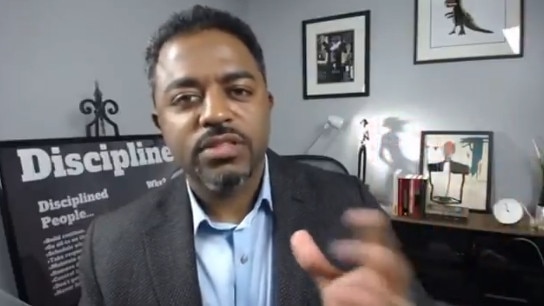
The survivor of an attempted assassination in 2024, the president-elect knows better than most the lethal danger and chaos that just one person acting alone can unleash on a country.
He will understand that the New Year’s Day massacre in New Orleans will elevate the fear of terrorism in the US during big events at a time when the strategic outlook has already been eroded by the revival of great power rivalry.
Investigators will need to deliver answers quickly to ensure confidence is restored and people feel safe – including the provision of information when it becomes available on who planned the attack, how many people were involved, and why.
New warnings have already emerged after US President Joe Biden confirmed the attack was inspired by ISIS, with a former US Army veteran Shamsud-Din Jabbar, 42, ramming his rented pick-up truck into a crowd of revellers on Bourbon Street in the early hours of January 1.
National security experts say the incident could herald a potential uptick in terror-related and lone wolf incidents under a second Trump administration.
This is a prediction informed by a combination of factors including the unfolding Middle East conflict opening up a new avenue for extremists to attempt to radicalise Muslim populations in Western nations.
To begin, ISIS remains active and dangerous, with the US just weeks ago conducting precision air strikes against its camps and operatives in Syria to ensure the group could not exploit the fall of the Assad regime. The group’s propaganda arm also continues to radicalise people across the globe.
Second, former Home Affairs Department secretary Mike Pezzullo said the terror group hated Trump for the death of its leader Abu Bakr al-Baghdadi in a military operation in October 2019 in northern Syria. He told The Australian that ISIS would be “seething” since Islamist terror group Hay’at Tahrir al-Sham had prevailed over Assad.
Third, Pezzullo also said there was a new opportunity for al-Qaeda, ISIS and spin-off groups to “exploit sentiment within large Muslim populations in Western countries that the treatment of Palestine and Palestinians is evidence of purportedly ‘deep’ anti-Muslim antagonism in the West”. This could see extremist groups plugging in to the already deep reservoirs of resentment in Western nations over the unfolding Middle East conflict.
Four, director of Strategic Analysis Australia Peter Jennings said the focus of ISIS appeared to be shifting more decisively to Western nations such as the US and Australia.
“The terror threat is probably higher than we’ve been imagining it for some time. It’s not that terrorists have gone away. They just changed their focus for a bit,” he said.
“It may well be that after a few years of ISIS really turning its focus elsewhere to Africa and even into Russia, that there’s just going to be a spate of these incidents now threatening the US and Europe and even Australia.”
Finally, counter-terrorism expert Greg Barton also warned of a high chance of similar copycat attacks. He said a return by ISIS to a campaign of international attacks would likely be countered by a rise in right-wing extremism under a second Trump administration “resulting in an escalation of violence”.




Terrorism is back on the US security radar and Donald Trump will be alert to the likelihood of further extremist attacks targeting America, its people and key institutions once he takes power later this month.